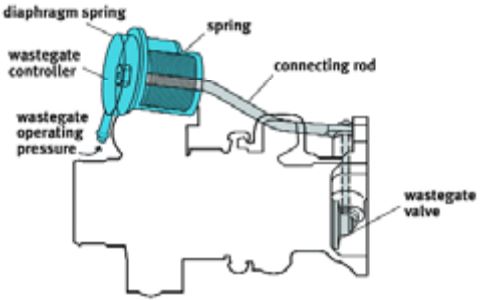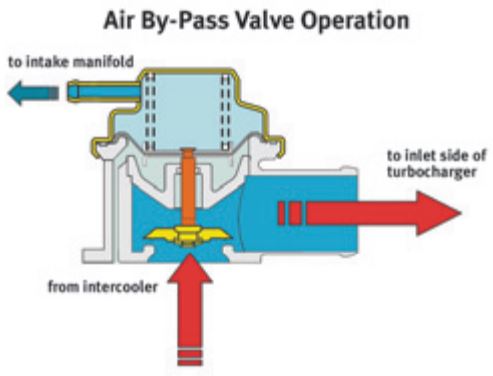Subaru Turbocharger Explained:
Wastegate Controller
The Subaru turbocharger control system regulates the charging air pressure according to atmospheric conditions and additional information from several sensors.
The wastegate controller adjusts charge pressure to optimum levels. The wastegate control solenoid valve switches the intake air pressure passages to the wastegate controller in response to signals from the engine control module (ECM).When the solenoid valve is closed, the intake air pressure upstream of the turbocharger unit is applied to the wastegate controller.

When the solenoid valve is opened, the intake air pressure downstream of the turbocharger is applied to the wastegate controller.
Air Bypass Valve
The air bypass valve (sometimes called a blow-off valve), is a device to relieve pressure in the intake. It is located in the air path between the intercooler and the intake manifold.
When the throttle is closed rapidly, the airflow is quickly reduced, causing unstable flow and fluctuating pressures. The result is low air suction noise – audible evidence of surge, which may lead to thrust bearing failure.

To prevent this, an alternate air passage in the air bypass valve routes excess pressure, or boost, away from the intake, thus lowering the pressure within the system.
